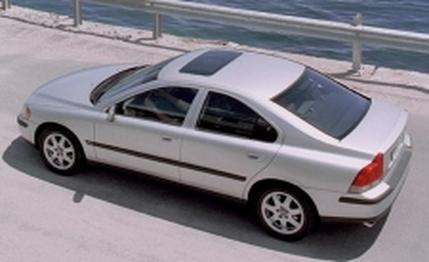
 Road Test
Road Test
The long, dark, harsh winters of Scandinavia have given rise to a sturdy stock of frugal, sensible folks descended from once wild-eyed Vikings such as Eric the Red. Fiercely independent, these Nordic folk are not given to frivolous style over function, and they can be, in some cases, reluctant to embrace new technologies. Consider that neither of the companies hailing from Sweden-where snow blankets at least part of the country for more than half the year-offered a four-wheel-drive sedan until 1999. Sven: "Four-wheel drive? Dat's fer dem sissy warm-landers who don't know how ta drive." Ole: "Yah, shoor, skinny studded tires is all ya need."
And Volvo's 1999 S70 AWD system was hardly state of the art. It used a simple viscous-coupling unit to transfer torque aft when the front wheels slipped. The trouble with such systems is that they tend to lock and unlock repeatedly in slippery conditions, which is less efficient and can sometimes feel jerky. They can also lock up when you don't want them to, such as when the rear tires have more grip than the fronts under braking. That means they require a second clutch to disengage the viscous coupling so that the rear wheels can't stop the fronts. The V70 AWD and Cross Country wagons will continue to use that system through the 2003 model year, but at last a more advanced Swedish-designed Haldex system is fitted to the 2002 S60 AWD.
Cognoscenti will recognize the Haldex name from its Audi TT Quattro and European VW Golf 4Motion applications. Aside from minor detail changes and a new, lighter magnesium case, the systems are fairly similar. A speed differential between the front and rear axles drives a pump that locks a wet clutch pack under electronic control. There's no built-in torque bias. All the torque goes to the front until a wheel slips, after which it goes wherever the grip is, or it's split 50/50 when all four tires are rooster-tailing snow.
We managed to outsmart the Haldex, however, and brake the front axle from the rear on a closed snow and ice circuit. We yanked on the hand brake in an attempt to rotate the car while accelerating hard on ice, but since the Haldex clutch was engaged, all four wheels locked. Clearly, such hooliganism should be considered atypical for a Volvo owner, but-we learned later-the system will unlock when the hand brake is engaged if speed is less than 44 mph and the throttle is open less than 10 percent.
Volvo claims the system adds 132 pounds to the S60, which is about what the old viscous system weighs and what Audi claims for its Quattro hardware. EPA fuel economy drops from 21/28 mpg city and highway for the light-pressure turbo front-drive S60 to 19/26 with all-wheel drive. The AWD badge adds $1750, same as the Quattro and xi badges at Audi and BMW.
Volvo's 197-hp light-pressure turbo five-cylinder is the only available engine, but the Haldex can handle more power, so an S80 AWD is likely, and there's hope for a 247-hp S60 T5 AWD (surely that model would be offered with a manual transmission, unlike this one). As it is, the S60 AWD's 7.4-second sprint to 60 mph and 15.8-second, 89-mph quarter-mile run are competitive with slushbox-equipped Audi A4 3.0 Quattros, BMW 325xi's, and Jaguar X-type 3.0s.
To demonstrate what the S60 AWD could do, we visited the Kananaskis Valley, about an hour and a half west of Calgary, Alberta, in the pristine Canadian Rockies. Our drive-and-photo car was shod in high-performance (H-rated) 17-inch Pirelli 210 Snow Sport winter tires. (Our Ann Arbor test car wore standard 16-inch Michelins.) The combination was formidable in the snow and on the snow-covered gravel and ice surfaces we traversed. The Haldex unit doled out the torque seamlessly. The winter tires, which washed out early and didn't transmit much info on the state of dry-pavement grip, provided superb cling and feedback in the slick. We could sense minute variations in the available surface friction.